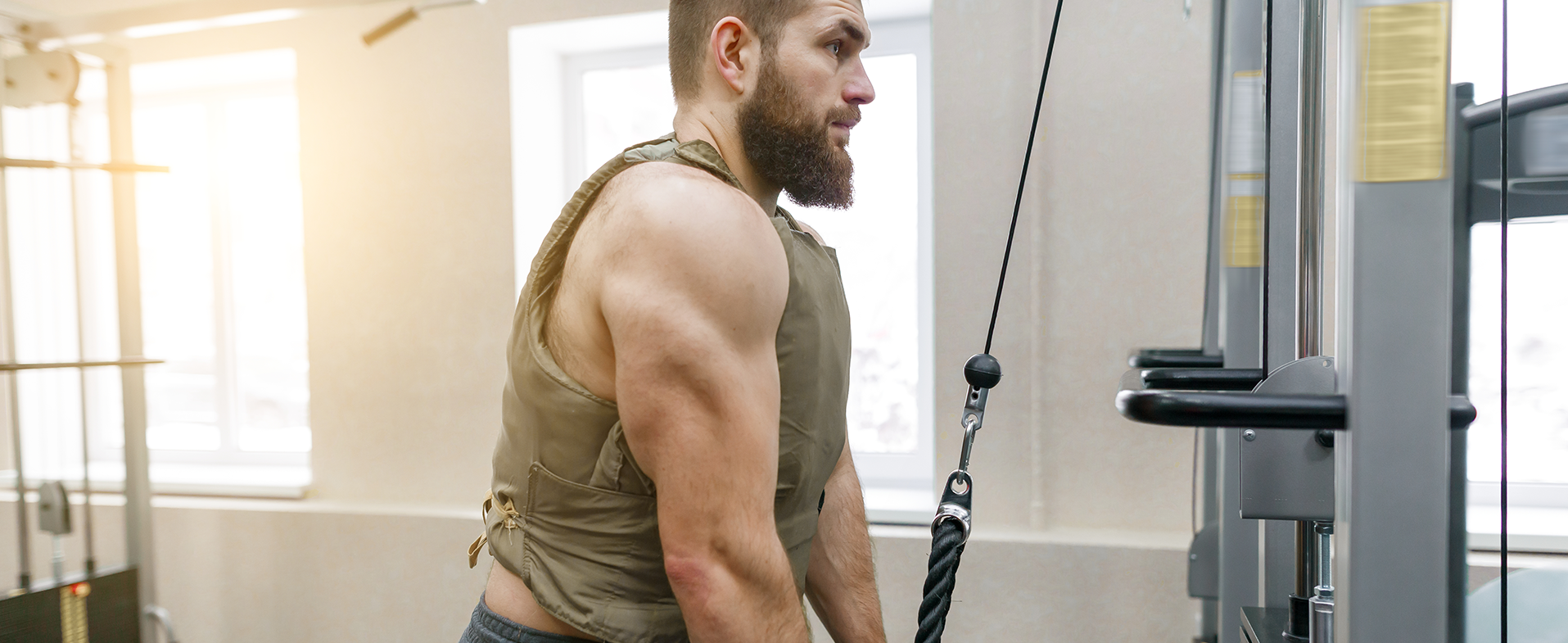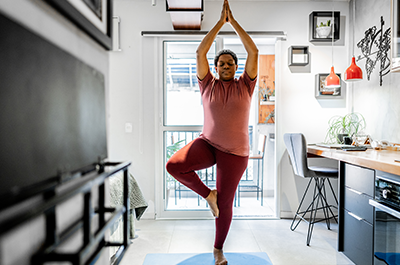Wearing a weighted vest while working out is said to have many health benefits, from boosting muscle mass to increasing the amount of calories burned and strengthening your cardiovascular health. But it’s not as easy as ordering any weighted vest online and wearing it while exercising. Depending upon the activity and your age, it can also carry some level of risk.
“A weighted vest can be a helpful tool, but it’s important to wear it in the right circumstances and with the right amount of weight,” says Stefanie Heyser, PT, DPT, ATC, a physical therapist at Henry Ford Health. “For example, if you look up ‘exercising in a weighted vest’ online, the results will tell you it’s okay to run in a weighted vest – but I don’t recommend it. I think the risk of injury is too high because it adds too much force. When you’re running, your body is already absorbing more than your body weight, so I wouldn’t recommend adding more weight onto that. It’s hard on your joints, muscles and tendons. It might improve your heart rate, but the risk isn’t worth the benefit because there are other ways to improve your heart rate.”
When To Safely Wear A Weighted Vest
Here, Heyser shares four scenarios when it’s safe to wear a weighted vest.
1. When trying to improve bone density.
Research shows wearing a weighted vest during your everyday routine - while doing chores, making dinner, etc., can improve bone density, especially in women who are post-menopausal. That said, it's recommended to remove the weighted vest when doing an activity that puts more weight on your back, like vacuuming. And don’t wear it all day.
“A study of post-menopausal women showed a weighted vest benefited them when wearing it for two hours a day, four days a week for 24 weeks,” says Heyser. “This was a safe amount of time that didn’t increase their risk for injury.”
Start with a weighted vest that carries no more than 3% of your total body weight. You can slowly increase the amount of weight as you get used to it, but Heyser doesn’t recommend reaching 5% of your body weight for a while. There are so many different types of weighted vests you can buy; some have preset weights while others have adjustable weights.
2. When jumping, if you are doing it for a particular sport.
Some studies – which used young athletes – showed wearing a weighted vest while engaging in agility and jumping activities has several neuromuscular benefits.
“Since you have to work harder when the vest is on, the idea is that you’re imposing hypergravity (or a force greater than the force of gravity), which has been shown to improve neuromuscular control, agility, coordination and kinesthetic awareness (or the ability to sense your body and how it moves),” says Heyser.

Go Where The Pros Go
Jumping is hard on the muscles, joints and tendons (like running is). This is why Heyser doesn’t recommend wearing a weighted vest while jumping unless you participate in regular athletic activities – and you don’t have a history of arthritic joint pain.
“Wearing a weighted vest is probably appropriate for younger athletic males and females who are at lower risk for injuries,” says Heyser. “I wouldn’t recommend a weighted vest for people who aren’t doing it for a sport-specific activity. (Think: track and field, volleyball, basketball, gymnastics, etc.). I also wouldn’t wear it the entire time. It is a great tool to use as a warmup, especially prior to speed and agility training. You could initially wear it for one set of eight jumps, and then two sets of eight and gradually build up. And especially if you are jumping, make sure your vest fits snug and close to your center. If it’s loose and sloppy, the weight won’t be evenly distributed and could cause issues.”
3. When walking or hiking.
“Wearing a weighted vest while hiking or walking can improve your muscular endurance, which is the burn you feel when you’re walking uphill for a long period of time,” says Heyser. “You could also walk on a treadmill with a weighted vest. Since you’re walking, not running, the impact on your joints, muscles and tendons is lessened.”
When wearing a vest to increase muscular endurance, Heyser recommends wearing it for about 15 minutes in one session, once or twice a week, and slowly increasing the amount of time. You could start with 3% of your body weight and work up to 5% over time.
4. When engaging in upper body strengthening exercises.
“If you can do pullups and other upper body exercises unassisted with proper form, adding a weighted vest can help increase your upper body strength,” says Heyser. “I’d recommend starting with only 1% of your body weight and increasing from there.”
Reviewed by Stefanie Heyser, PT, DPT, ATC, a physical therapist at the Henry Ford Center for Athletic Medicine.



